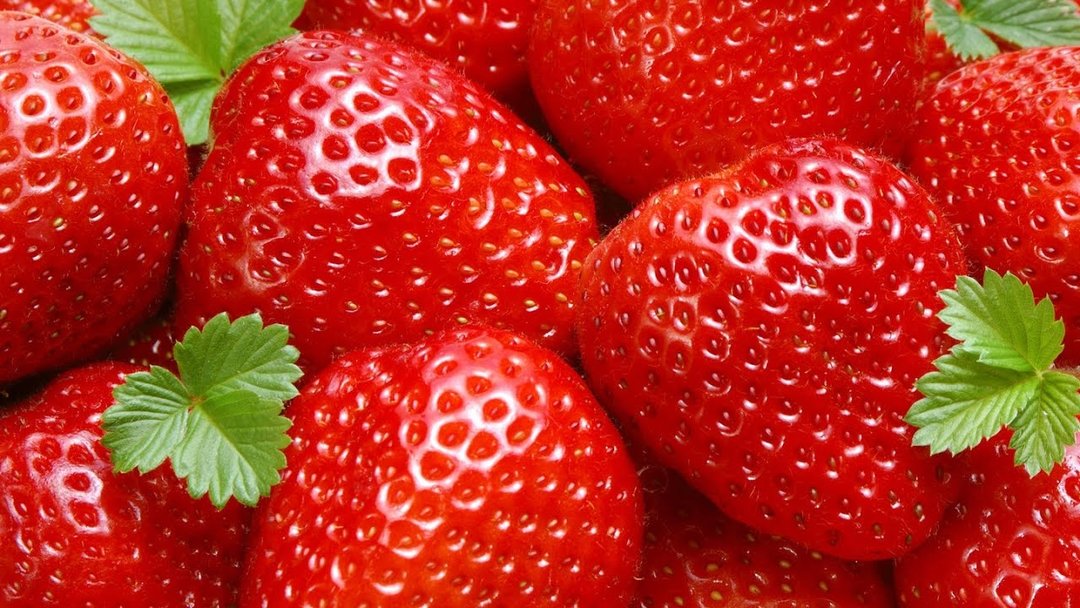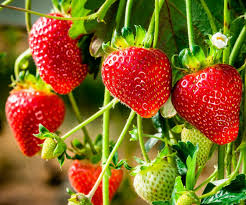Content:
Strawberries (although it would be more accurate to call them nutmeg strawberries) is a plant that needs warmth and moisture for development and fruiting. With a lack of moisture, it dries quickly, and at low temperatures the roots are easy to freeze - and if the problem with aridity is easy to solve, then it is more difficult to deal with frosts. The peculiarity of strawberries is that it tolerates winter cold much easier than spring temperature drops. True, a plant can successfully survive the cold only if the winter is snowy (or not too cold - at -40 the berry will not grow without shelter). Otherwise, the ground freezes, and together with the ground, the roots of the plant freeze through, ensuring its rapid death.
Before answering the question of what frosts a strawberry can withstand in spring, you need to decide which period of spring we are talking about. Before it finally begins to warm and the snow completely melts, the berry, in fact, is not in danger.
In spring, after the snow cover has melted and the berry has finally "awakened", strawberries can withstand frosts down to -10 degrees, and only if this plant is strong and well developed. Otherwise, it can easily die - both as a whole, starting from the roots, and only flowers.
What temperature can strawberries withstand during flowering?
Flowering time is the period during which the plant is very vulnerable. The first flowers appear in late April and early May, that is, exactly at the time when the weather is quite capricious, and a cold snap may suddenly begin. With spring frosts, the likelihood that the plant will die at a slight minus temperature is minimal. This is especially dangerous for flowers and small ovaries - the maximum temperature that they can tolerate is -3-4 degrees.
True, even if all the flowers begin to freeze, but the roots, leaves and whiskers remain intact, the fruiting process may well begin again - it is possible that in the same year. However, the harvest, of course, will be much less than it could have been.
How to save strawberries from frost
Since spring frosts pose a significant threat to strawberries, you need to take care in advance to protect the plants.
The easiest way to save a berry from an unexpected cold snap is to cover it in advance. Since there is no need to cover strawberry bushes for the winter (if the average winter temperature is above 30-40 degrees), this should be done in the spring, after the snow melts. However, it is also possible to shelter them for the winter, especially if there is little snow in winter - it is advisable to use natural materials for this, such as hay, sawdust, pine needles.
The peculiarity of the spring shelter is that the bushes are closed only at night, and for the day they are freed so that they have free access to air and light. Since the air temperature is higher during the day, there is no danger of freezing plants.
You can cover plants in spring:
- film;
- agrofibre.
The advantage of agrofibre is that it allows air to pass freely, so the plants covered with it can not be opened for a day, but closed with a cloth in mid-April and opened when the temperature conditions even out.
There are other ways as well. So, some gardeners prefer to fumigate the bushes with smoke. To do this, do the following:
- Small blanks for a fire made of brushwood, straw, sawdust and any other materials are placed between the beds with plants.
- Since campfires should not burn, but smolder and smoke, some of the material to be ignited - about two-thirds - should be wet. Collect the workpiece as follows: put dry material down, and a layer of wet material on top. Above the fire is laid out with earth to prevent the fire from spreading. An open place is left in the middle through which smoke will spread.
The sizes of the fires are determined individually. It is believed that a large fire of one and a half meters is enough for one hundred square meters of land. However, since strawberries usually grow in small beds, it is best to make several shallower fireplaces and arrange them so that the smoke covers the entire strawberry bed.
Before starting fumigation, you need to make sure that the wind is blowing in the right direction. Smoke bombs can be used instead of bonfires.
This method has its drawbacks:
- Risk of fire, especially in strong winds.
- Have to work at night.
- To use the wind is necessary, and not strong, without this the method is ineffective.
Another, safer way to deal with frost is watering with warm water or sprinkling. Since the temperature of the soil drops by only a few degrees overnight, in order to prevent freezing, it is enough to raise it by the same few degrees.
Sprinkling is watering the ground with warm water in order to obtain steam by evaporation. When using this method, it is the steam that prevents the ground from freezing.
To use this method, you need the following:
- warm water;
- spray nozzle, special hose nozzle or drip irrigation system.
It is necessary to water not the bushes themselves, but the ground under them. This method works due to the fact that warm air is lighter than cold air, and therefore the generated steam will serve as a natural protection against cold air currents for some time.
Sprinkling, like fumigation, can be used as a temporary measure, and for longer frosts, it is better to use a covering material.
How to protect strawberries from frost in summer
Since unexpected frosts can occur not only in spring, but also in early summer, you should also be prepared for them - so, if the daytime temperature is below normal, the cold will most likely hit at night.
So it is better to monitor abnormal changes in daily air temperature. In case of frosts in summer, the plant can be protected by the same methods as in spring - by covering, fumigation, sprinkling. In general, since it is unlikely that the thermometer will drop below zero, you can get by with sprinkling, which is well suited for temperatures up to -5 degrees (in principle, the berry tolerates such a temperature without special measures).
However, for greater convenience, it is still better to keep the film or roll of agrofibre until mid-June, since it is the covering that is the most convenient method of all those listed above.
In order to better protect the plants from an unplanned cold snap, before covering them with a film, you can first water the ground with warm water.
Strawberries after frost: what to do next
If the bushes still could not stand the cold, you can try to reanimate them.Of course, everything depends on the degree of damage - if the roots are frozen, then the best thing to do is to plant the strawberries again.
However, in some cases, you can try to save the strawberries.
- If, after a cold snap, the leaves are covered with frost, you can provide them with shade, and then spray with cold water and leave to thaw. However, this must be done as quickly as possible before the leaves collapse. The shade is necessary for the defrosting to occur gradually.
- The most effective recovery method is to place mineral fertilizers (such as nitroammofosku or chicken droppings) under the root of the plant. In order not to cause unnecessary harm to the plant, feeding should be weak - for example, one tablespoon of mineral fertilizer is diluted for 10 liters of water, and the recommended ratio of manure to water is 1 to 20. It is worthwhile to compensate for the weak solution with regular feeding - until the berry recovers, apply fertilizer it is necessary daily, in an amount of at least half a liter per bush.
When planting garden strawberries, you must remember that they are not hardy plants. To get a good harvest, you will have to not only make sure that she does not get sick, but also the weather - at least until the ovaries are large enough.

















